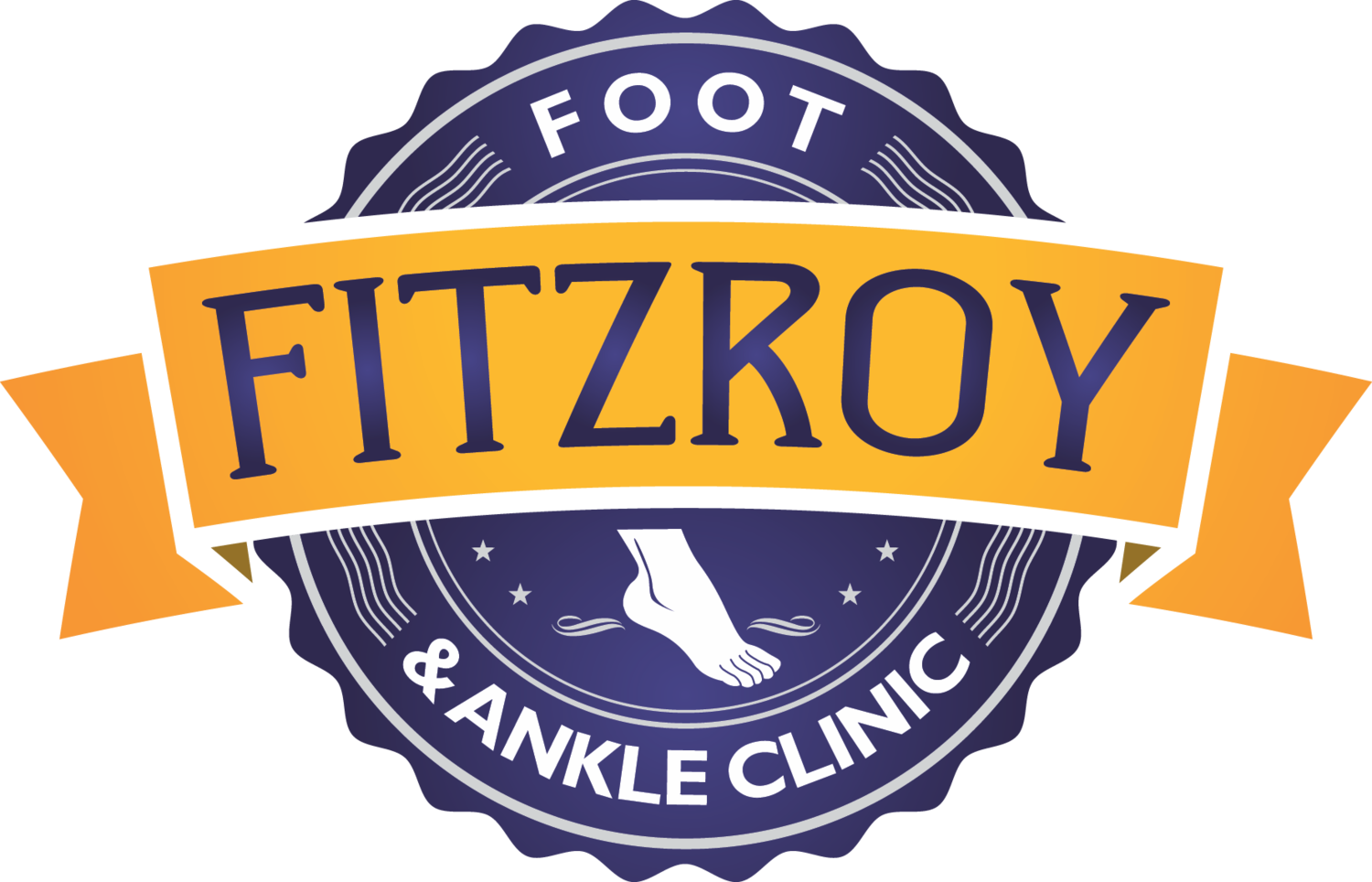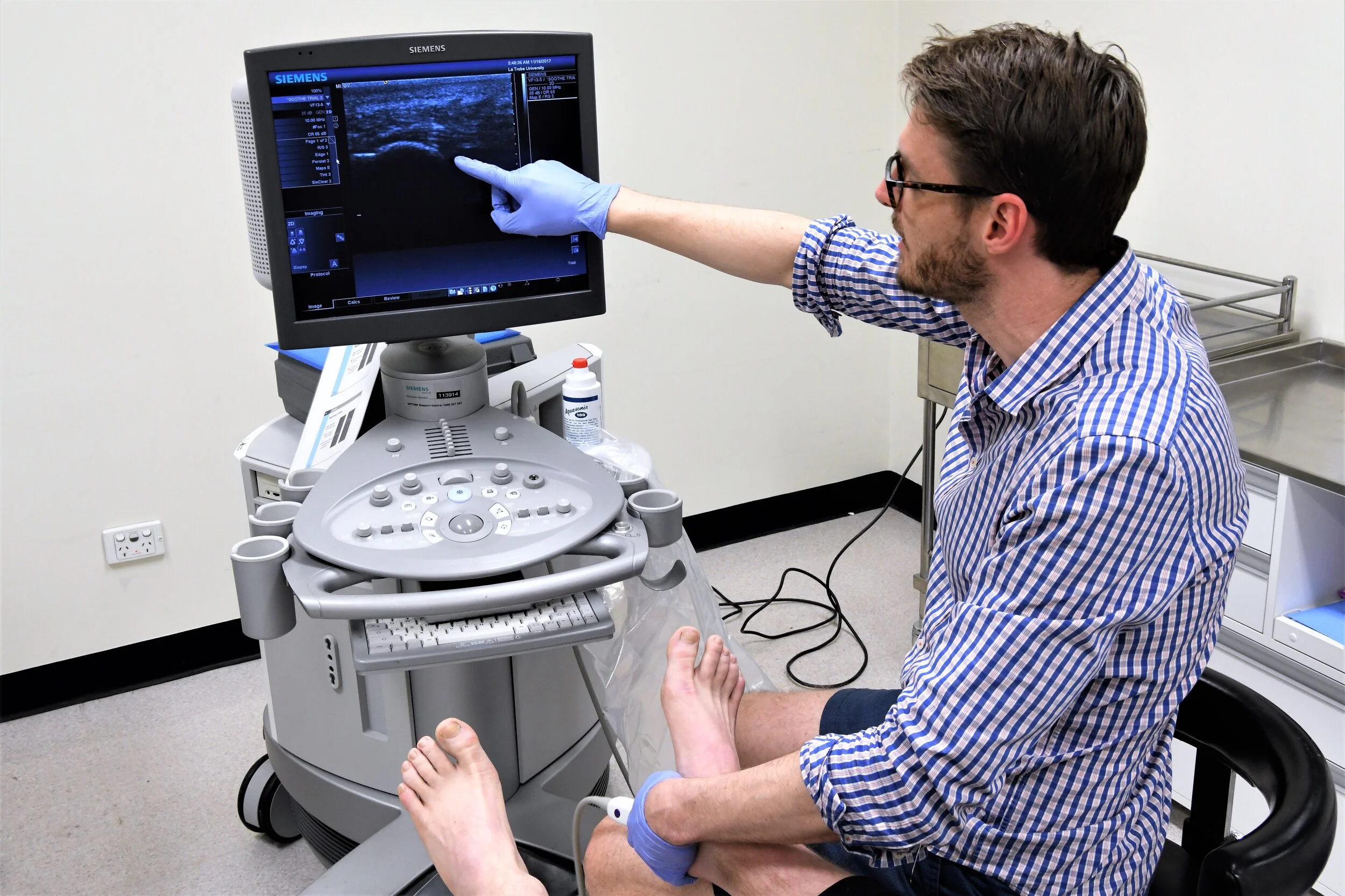Our podiatrist, Dr Glen Whittaker, has completed further training to become endorsed to prescribe scheduled medicines. This means we can provide a range of additional treatments for our patients, including various injections to manage pain such as corticosteroid injection and long-acting anaesthetics.
steroid injection
At Fitzroy Foot and Ankle Clinic we can administer steroid injections (also called cortisone or corticosteroid injections) to reduce pain and inflammation associated with certain musculoskeletal and sporting conditions. These injections are often not a first-line treatment, but can be an important part of a comprehensive treatment plan. When used appropriately, steroids are safe and can be very effective.
Conditions that may respond to steroid injection include:
arthritis
plantar fibroma
ganglionic cysts
bursitis
A steroid injection can be administered in different ways depending on the location of the complaint. For some complaints, the steroid can be injected directly into the area (such as bursitis or a ganglion). However, for some regions of the foot an injection can be uncomfortable, so a local anaesthetic injection is administered behind the ankle. This numbs the foot and makes the steroid injection more comfortable. This approach can be used for plantar fasciitis injection.
What to expect
The injection site will be cleaned with an anti-septic. A small needle will be used to direct the steroid into the tissue. Some discomfort may be experienced, however it will be brief. You may have numbness in the region of the injection for several hours, so it is important that you can rest for at least 24 hours afterward.
Safety considerations
Although this is a very common treatment, occasionally people can experience adverse effects. The most common adverse effects are outlined below:
Pain and discomfort
as with any injection, you may experience some pain and discomfort during the actual injection. In addition, two to three days following the procedure you may experience some localised swelling, and pain at the injection site.
Infection
as with any injection, there is a very low risk of an infection at the injection site. This risk will be minimised by ensuring all equipment is sterile and your foot and ankle are disinfected prior to the injection.
Nerve injury
when administering the injection to your foot, the needle may be placed close to a nerve. Occasionally, you may experience some nerve sensations if the needle touches the nerve. This may feel like ‘pins and needles’ or a localised ‘electric shock’. Sometimes people will experience these symptoms for a few days following the injection.
Local anaesthetic allergy
there is a risk of allergy to the local anaesthetic mixed with the steroid. This risk is very small and you will be questioned prior to the injection of any known allergies to local anaesthetics.
Thinning of fat
in less than 1% of corticosteroid injections the fat where the steroid is administered may reduce in thickness. This fat usually returns between 6 and 30 months after the injection.
Local skin discolouration
very rarely people will experience a loss of pigmentation at the area near a steroid injection. These changes have been reported to last between two to eleven months.
Long-acting anaesthetic
Long acting local-anaesthetics can reduce pain associated with some conditions or procedures, and can be used to help diagnose certain conditions. Some conditions such as sinus tarsi syndrome can be quite painful, but are difficult to diagnose clinically and with imaging. An anaesthetic injection in the painful location can confirm a diagnosis.
In addition, the injection of fluid within the tissue can be beneficial for some conditions where there may be fibrosis or scarring that has developed.
Ultrasound guidance
Our podiatrist, Dr Glen Whittaker, has completed further training on the use of ultrasound for injection. Using ultrasound can ensure that needle placement is more precise, which means less medicine is required to achieve the required outcome.


